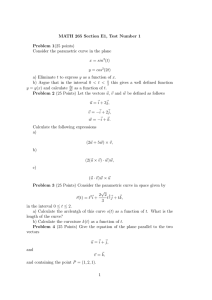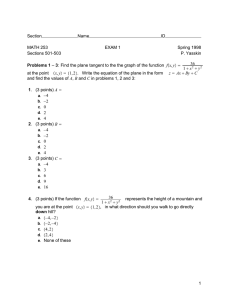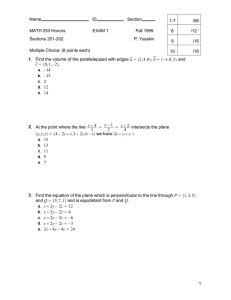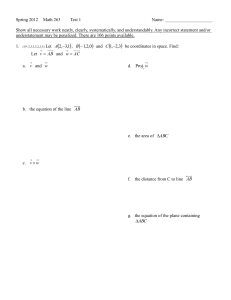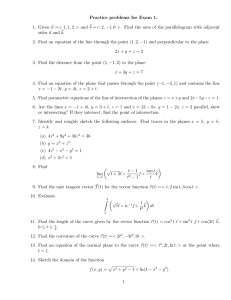Document 11103405
advertisement
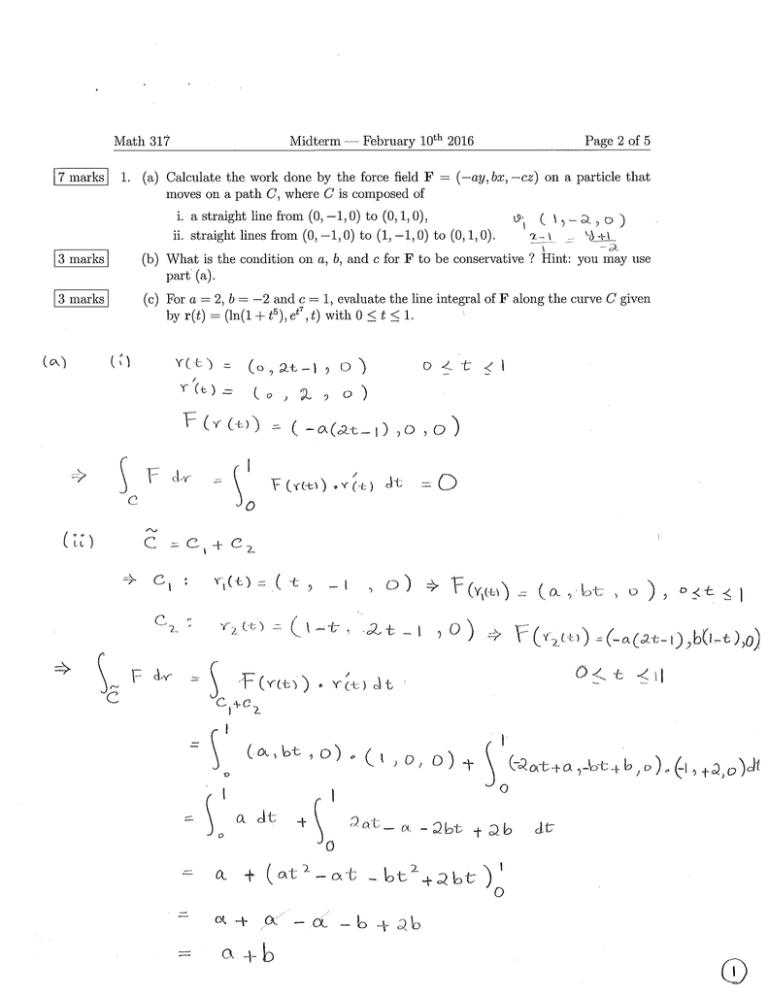
Because the field is defined on
R^3 which is simply connected.
= f(r(1))-f(r(0)) by the fundamental
theorem for vector fields.
this typo had been
edited before the
midterm date.
NOT
If C was a plane curve that is to say a curve contained in a plane P, then at every parameter t the osculating plane to the curve would be
equal to the plane P.
In the previous question, we computed the osculating plane to the curve at parameter t=0. If the curve was a plane curve, it would be
contained in the plane with equation -x + y + √2 z =1. To prove that the curve is not a plane curve, it is enough to find a parameter t
such that the corresponding point of the curve is not on this plane: we look for t such that
-e^{-t} cos(t)+ e^{-t} sin( t)+ 2 e^{-t} ≠1
We "check" (admittedly you may need a calculator or the knowledge of the value of e to really check it, but you got full credit for thinking
of something like this) for example: at t= π: 3e^{-π} ≠ 1.

